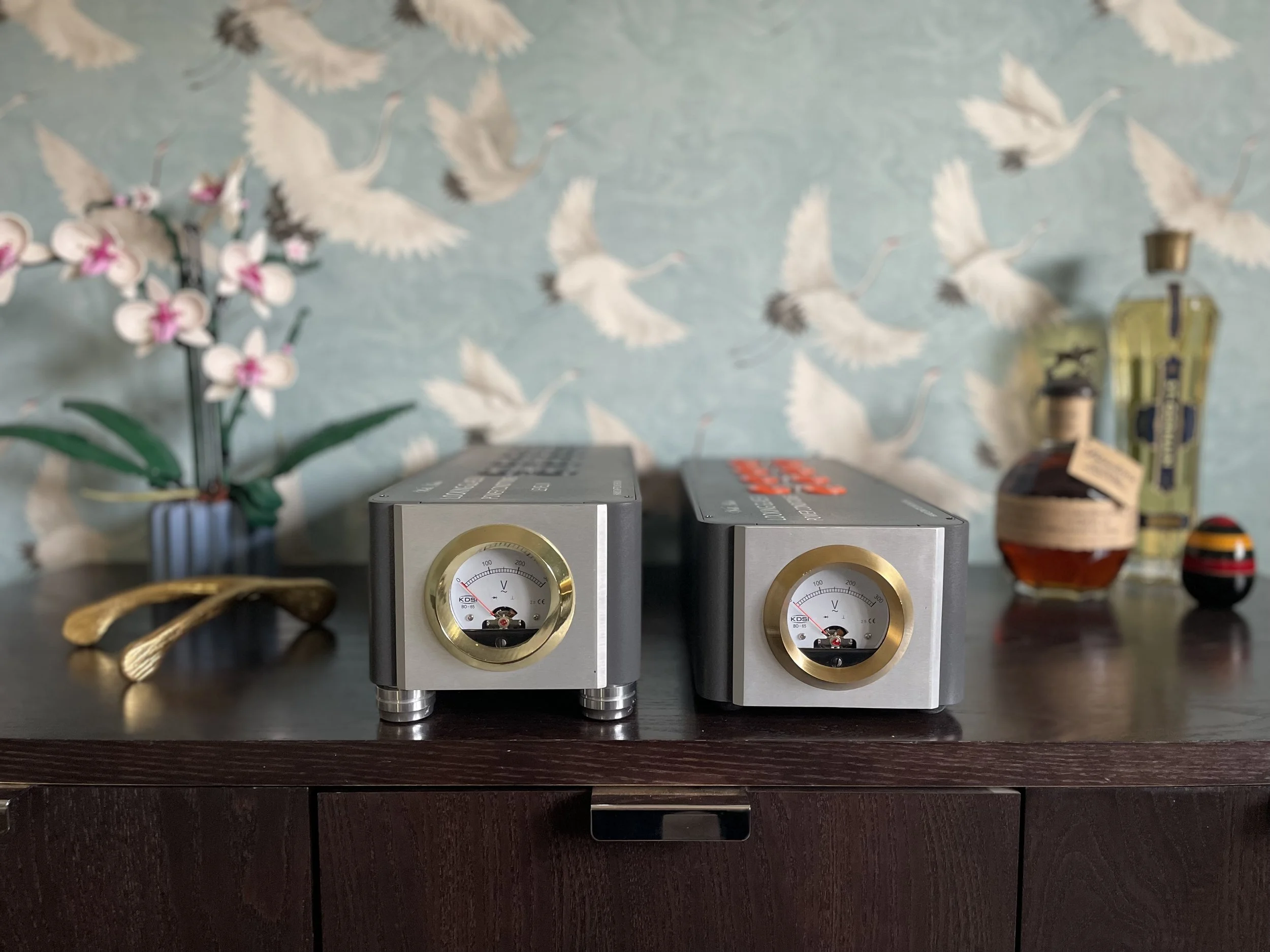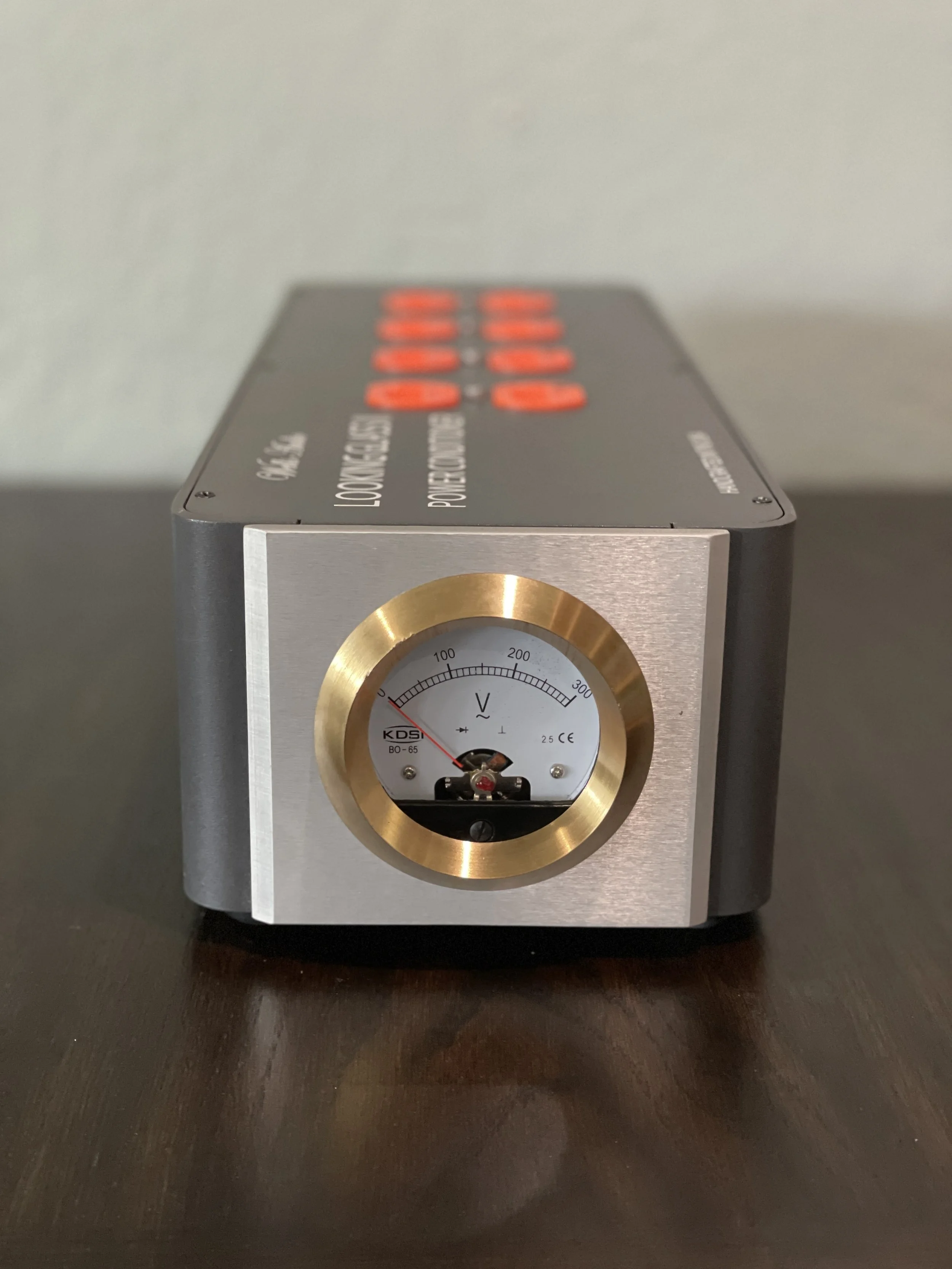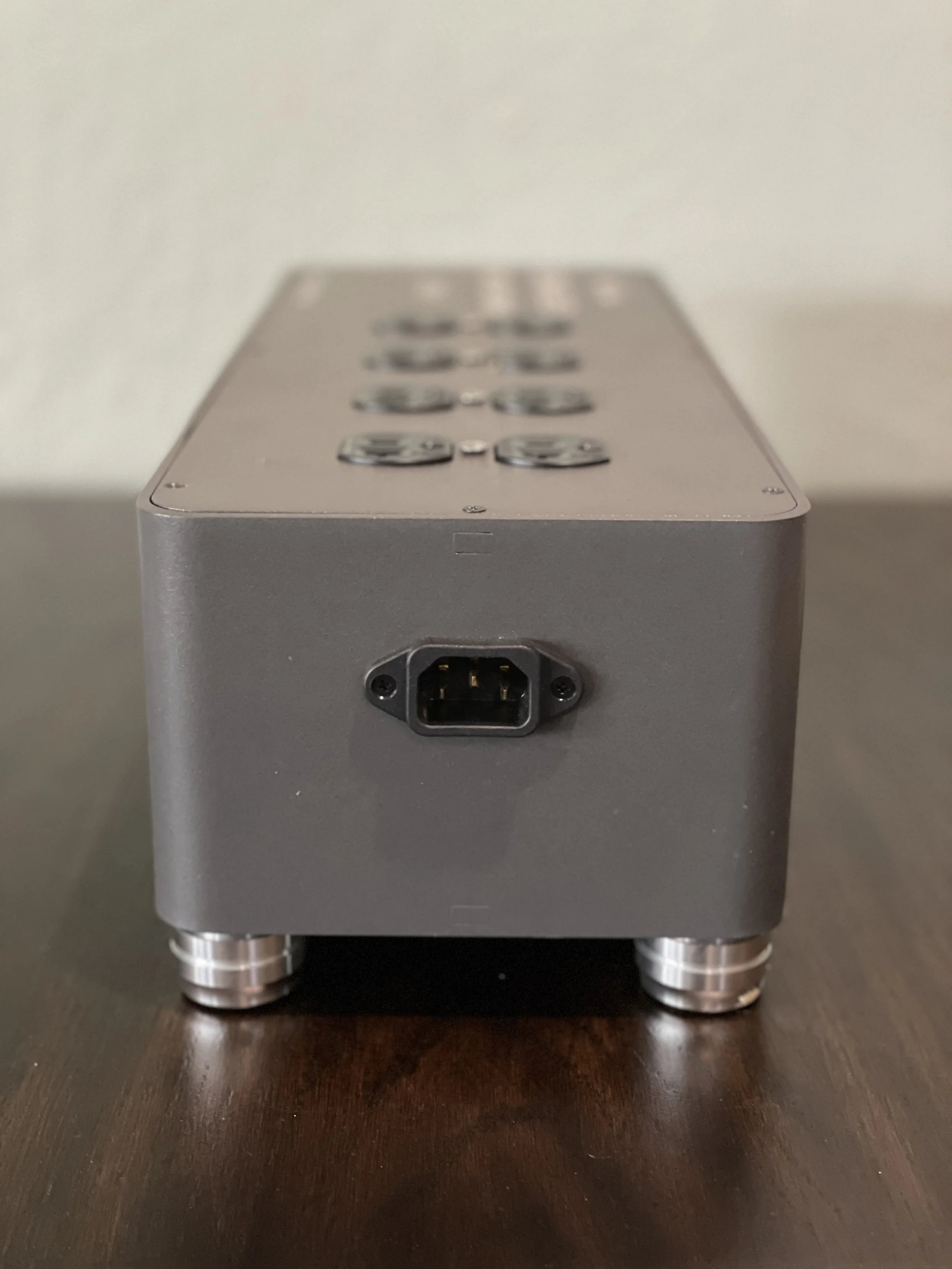Looking Glass II
Starting at $3,000
Power conditioners should do only one thing: eliminate noise without removing dynamics and tonal color. With simplicity of design and meticulous execution, the Looking Glass line of Wells Audio power conditioners goes above and beyond.
Combining quiet Teflon wire insulation and revolutionary filtering technology developed by John Curl and Jack Bybee, dynamics are explosive; the soundstage is huge, separation is tremendous, decay is extended, and bass the most prodigious you have ever experienced through your system.
Customize your Looking Glass
Level I
$3,000
Includes quality parts, some of which are cryogenically frozen to decrease noise.
Level II
$7,500
Base model plus the introduction of noise canceling technology and premium parts. Miflex copper PIO caps are used for the mid and high-frequency filters, and a larger oil-filled polypropylene cap is used for the low-frequency filter. Air-core ribbon chokes are also used in the low-frequency filter. Smaller, iron-core chokes are used in the mid and high filters to reduce capacitive leakage paths. Bybee Quantum Purifiers are used at the tail end of the filter string to give a final polish to the already quiet power.
Custom build
Have a custom build in mind? Contact us to discuss your needs.
Product Views
Technical Features of the Wells Audio Looking Glass II, Level II Power Conditioner
Design Principles
The Looking Glass II Level II power conditioner uses traditional LCR filters combined in a novel way to produce maximum synergy among the filter sections. The circuit employs a 3-stage fully symmetrical frequency-staggered noise filter to optimize the suppression of AC line harmonics across a broad spectrum of frequencies. The guiding principles behind the filter design are: 1) the use of state-of the-art audio grade parts; 2) the use of passive filters optimized for low, mid, and high-frequency noise suppression; and 3) the use of resistive damping to control transient overshoots and ringing.
The AC Harmonics Problem
Passively filtered power conditioners use chokes and capacitors to suppress and bypass noise on the AC line, leaving a more or less pure 60Hz voltage at the output. Unfortunately, high-frequency line harmonics can exploit leakage paths in the filter components and pass through to the conditioner’s outputs in a typical passively filtered power conditioner. These unfiltered harmonics are then passed along to whatever equipment is plugged into the conditioner. To one degree or another, all chokes and caps contain leakage paths that allow unwanted noise harmonics to pass through them.
The Looking Glass Solution
To minimize this effect, the three filters inside the Level II Looking Glass are each optimized for a different frequency range: low, mid, and high. The three filters are lined up in series from low to high, so harmonics that pass through the leakage paths of the low-frequency filters are captured and suppressed by the high-frequency filters. The three filter stages in the series combine their effects to create a wideband wall of harmonic suppression.
Transient Overshoots & Ringing
Transient noise pulses, which occur when an appliance is turned on or off or when a motor is revved up or down, produce a broad spectrum of high-frequency harmonics on the AC line. This results in a fast change of state inside the chokes and caps of the filters. When that happens, undamped chokes and caps can overshoot and ring. In the worst case, they can oscillate uncontrollably.
The Looking Glass Solution
Resistors are the forgotten component in passively filtered power conditioners. Resistors are energy dissipators that can be used to dampen uncontrolled resonances in electrical circuits. The resonant frequency of each LC filter in the Level II Looking Glass is resistively damped to suppress overshoots and ringing when the conditioner is struck by high-energy transient pulses. In an undamped filter, the effect of such pulses is prolonged and amplified. Resistive damping allows the Level II Looking Glass to control overshoots like a shock absorber controls bumps in the road—by dissipating their energy.
Looking Glass Owner’s Manual
For more information about the Wells Audio warranty, regulatory compliance, safety, operation, and care of your product, see the Looking Glass Owner’s Manual.







